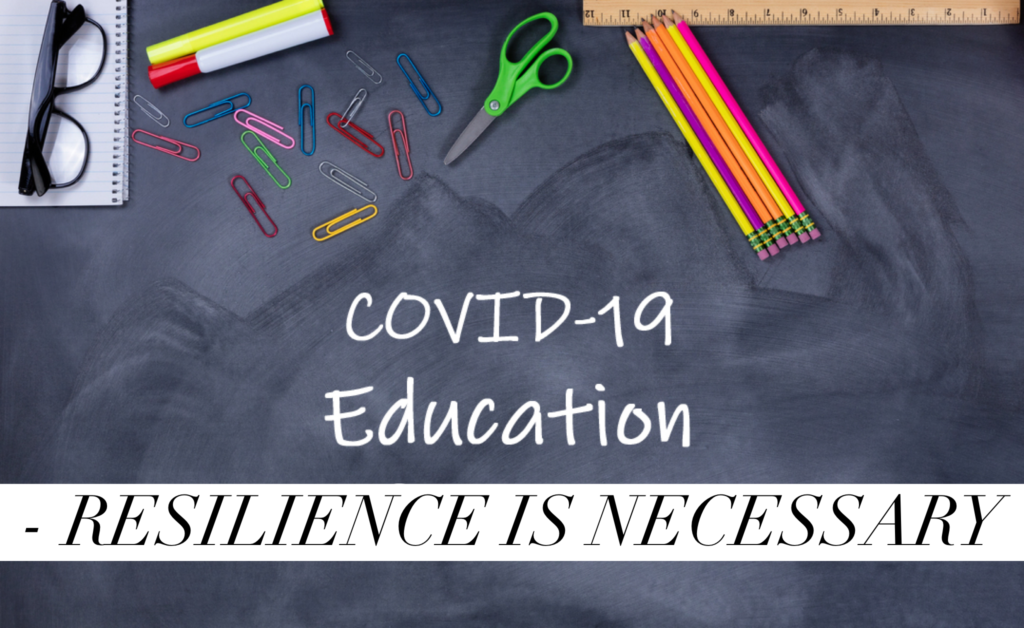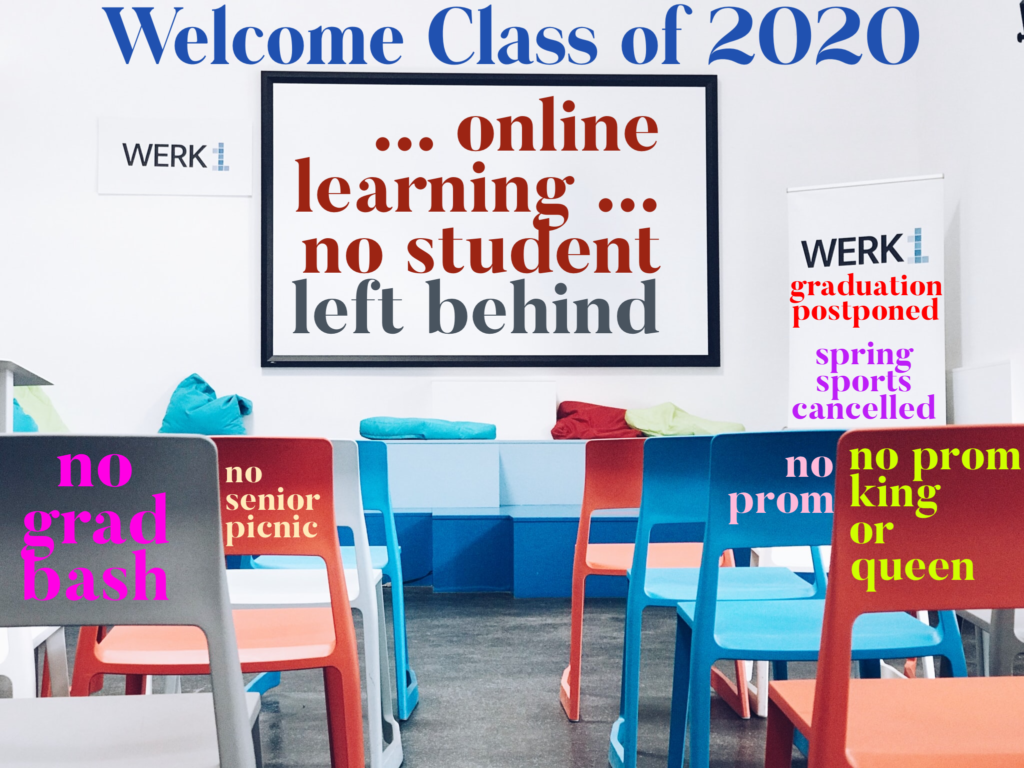
COVID-19 came out of nowhere and the hearts and minds of the graduating Class of 2020, was filled with mixed emotions on all social media platforms. Instead of enjoying the new apps, new technology, new fashion trends, and even new entertainment buzz through the airways, the systematic approach to education has taken a turn like never before. This shift requires everyone involved in this educational paradigm to come together and build this aircraft that has already taken flight. There’s no time to think of the most important parts, labor, crew members, or even passengers. At the present time, the focus is getting all those onboard successfully to the final destination. If passengers do not have essentials to successfully board aircraft before it takes flight, provisions are made. Every passenger is treated equally regardless of grades, status or situation. The focus, again, is getting everyone on flight to continue this scholastic journey as though nothing has changed.

Happy New Year and welcome to a new decade…
Happy New Year and welcome to a new decade filled with endless possibilities to start fresh and achieve greatness, they said!!! Administrators, teachers, staff, students and parents so optimistic about what is to come. Students pressing towards the mark to bring their grades up, pass their state exams and even earn the necessary points to stand as the first valedictorian of the decade. Oh, what a glorious time it will be to finish their senior year creating memories of prom, grad bash, senior picnic, senior breakfast and more. The months of planning, coordinating, reserving, booking, and shopping with a heart filled with anticipation and excitement knowing the closing of this calendar school year could turn the trajectory of their future for the good is right around the corner. This is going to be the year, they thought: until COVID-19.
COVID-19 is shaking the works as we know it. While death tolls increase across the globe, it is safe to believe that induced trauma experienced in the lives of children will increase as well. Trauma from losing a loved one such as a parent, relative, friend, or even significant other is expected. Furthermore, this pandemic has grouped all students as at-risk as a direct result of the unknown and the unfamiliar. Pre-COVID-19, the term at-risk often described a population of students who are considered to have an increased chance of failing academically or dropping out of school (Tas, Selvitov, Bora, & Demirkaya, 2013). However, during COVID-19, this may change. The entire K-12 system will continue to experience challenges that will require everyone in this intricate paradigm to become not only fluid but resilient to ensure student success is achieved across grade levels.
Getting students engaged independently despite not having access to directly supervise process may be challenging. Furthermore, familiar faces, smiles, and gestures may not be present as it was before COVID-19. Though this may be true, there is hope. Regardless of which educational system students belong to in terms of public, private, or charter, resiliency will be the determining factor of success. Oehlberg, 2008 supports the notion that student engagement is an essential aspect that will help increase student motivation to learn and finish their educational journey successfully.
References
Oehlberg, B. (2008). Why schools need to be trauma-informed. Trauma and Loss: Research and Interventions, 8(2), 1–4.
Tas, A., Selvitopu, A., Bora, V., & Demirkaya, Y. (2013). Reasons for dropout for vocational high school students. Educational Sciences: Theory and Practice, 13, 1561–1565.
Sindy, you stated it… as educators, we are building the plane as we fly it. The current “passengers” have been granted the green light to graduate even if they haven’t passed the required FSA or EOC. The must-have the GPA but we are trying to fly to our destination and start afresh in the fall. Class of 2020 will definitely have the experience to share. How is this being handled at the post-secondary level? What procedures are in place?
Great Job, Sindy!!!
Thank you for sharing your thoughts. I could not agree more about how necessary resilience is for us now. COVID-19 shows us the true meaning of Life happens. It has shifted people’s plans, turned upside down many families, and set up new priorities in our lives. However, the passengers ( students)would have to take something positive out of this unprecedented challenge the world is facing as pilots (educators) are trying to do their very best to make this year less traumatic. Some flights have to make a layover before their final destination. As long as they are still on board no matter how long the trip is, they will undoubtedly make it to their final destination.
Sindy this was an awesome read. Mental Health issues at this time are reaching all-time high numbers. Trauma-informed care is highly needed. My district ended up creating a hotline to assist with the growing need. Additionally, students can receive virtual therapy sessions so students can have some form of normalcy while attempting distance learning full-time.
As a Youth Mental Health Trainer, we teach about risk and protective factors and how students are some of the most resilient individuals alive. It was good to hear you echo such true information in your post. It helps to know that we will bounce back after all of this is over!
Be safe and well.
Thank you Sindy! I participated in a Google virtual room today with 30 students and I must say, hearing their young voices and minds, lifted my spirits. It was also due to the amazing teacher they have who has engaged them from day 1!
Sindy – Well said! The whole engagement piece seems to be the lynchpin in making this new system of Remote Learning work. Not only is it difficult to engage students when they’re not in the same room as you, but on the secondary level, where Remote Learning is truly a new concept, engagement is complicated by connectivity issues and device access. In my setting, about six percent of our students are completely missing from our remote learning setting. If only there were a way to make the playing field a bit more level!